
The Berlin Wall was a guarded concrete barrier that encircled West Berlin of the Federal Republic of Germany from 1961 to 1989, separating it from East Berlin and the German Democratic Republic. Construction of the Berlin Wall was commenced by the government of the GDR on 13 August 1961. It included guard towers placed along large concrete walls, accompanied by a wide area that contained anti-vehicle trenches, beds of nails and other defenses. The primary intention for the Wall's construction was to prevent East German citizens from fleeing to the West.

Erich Fritz Emil Mielke was a German communist official who served as head of the East German Ministry for State Security, better known as the Stasi, from 1957 until shortly after the fall of the Berlin Wall in 1989.

The inner German border was the frontier between the German Democratic Republic and the Federal Republic of Germany from 1949 to 1990. De jure not including the similar but physically separate Berlin Wall, the border was 1,381 kilometres (858 mi) long and ran from the Baltic Sea to Czechoslovakia.

Peter Fechter was a German bricklayer who became the twenty-seventh known person to die at the Berlin Wall. Fechter was 18 years old when he was shot and killed by East German border guards while trying to cross over to West Berlin.
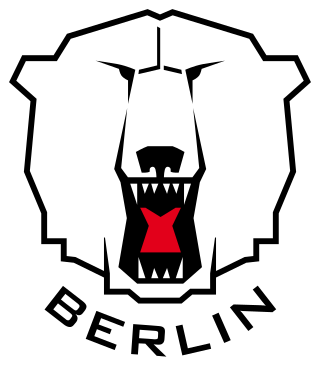
Eisbären Berlin is a professional ice hockey team based in Berlin, Germany. The team competes in the Deutsche Eishockey Liga (DEL), the highest level of play in professional German ice hockey, and is also one of the league's founding members. The Eisbären have won the DEL championship more often than any other team, with eight DEL championships as of the 2020–21 season. They won the German ice hockey cup in 2008 as well as the European Trophy in 2010. Before reunification the team won the East German ice hockey championship 15 times as SC Dynamo Berlin.
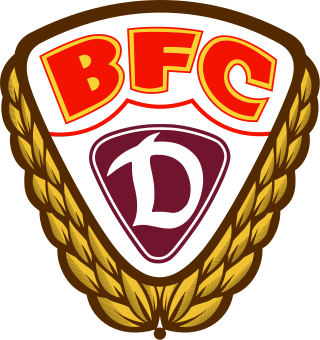
Berliner Fussball Club Dynamo e. V., commonly abbreviated to BFC Dynamo or BFC, alternatively sometimes called Dynamo Berlin, is a German football club based in the locality of Alt-Hohenschönhausen of the borough of Lichtenberg of Berlin.

1. Fußballclub Union Berlin e. V., commonly known as 1. FC Union Berlin or Union Berlin, is a professional German football club based in Köpenick, Berlin.

Sportforum Hohenschönhausen, officially named Sportforum Berlin, is a multi-purpose sports complex in the locality of Alt-Hohenschönhausen of the borough of Lichtenberg in Berlin. The Sportforum was named Dynamo-Sportforum during the East German era.
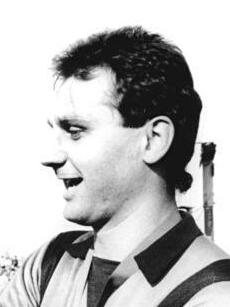
Bodo Rudwaleit is a German former football goalkeeper who played as goalkeeper for the record champion BFC Dynamo from 1976 to 1989.
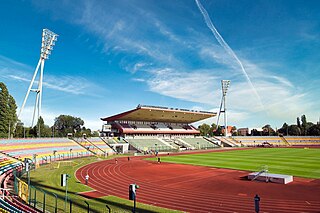
The Friedrich-Ludwig-Jahn-Sportpark is a multi-purpose sports complex located in the western part of the locality of Prenzlauer Berg in the borough of Pankow in Berlin. The sports complex covers an area of approximately 22 hectares and comprises several facilities. The main building is the Friedrich-Ludwig-Jahn-Stadion. The stadium is the third-largest stadium in Berlin, after the Olympiastadion and the Stadion An der Alten Försterei, with a capacity of approximately 20,000 seats, of which 15,000 are covered. Currently, the main tenants of the stadium are VSG Altglienicke and Berlin Thunder. Friedrich-Ludwig-Jahn-Sportpark was the venue for the 2018 World Para Athletics European Championships.

Lutz Eigendorf was a German professional footballer who played as a midfielder.

Günter Litfin was a German tailor who became the second known person to die at the Berlin Wall. Litfin was the first victim to be killed by East German border troops, the first to succumb to gunshot wounds, and was the first male victim.
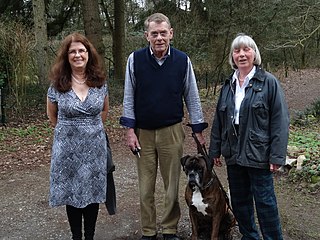
Wolfgang Engels is a former civilian employee of the East German National People's Army, employed as a car mechanic and driver, who in 1963 used a stolen BTR-152 armoured personnel carrier to escape to West Germany by breaking through the Berlin Wall.

The Berlin derby is the name given to any association football match between two clubs in Berlin, Germany, but has more recently referred to the derby between 1. FC Union Berlin and Hertha BSC.
The 1989–90 season was tumultuous for BFC Dynamo. The East German regime faltered and parts of the Berlin Wall were opened on 9 November 1989. Forward Andreas Thom became the first player in the DDR-Oberliga to leave for the West German Bundesliga. The dismantling of the champion team from the 1980s was now well underway. The Stasi was dissolved and the club thus lost a major sponsor. The East German Ministry of the Interior declared that it was only prepared to support the club until the end of the 1989–90 season. The club changed its name to FC Berlin on 19 February 1990, in an attempt to distance the club from the Stasi. The number of spectators dropped drastically. FC Berlin finished the 1989-90 DDR-Oberliga in fourth place and failed for the first time to qualify for a European competition. Also Thomas Doll, Frank Rohde and Rainer Ernst left for the Bundesliga after the season.
BFC Dynamo finished the 2003–04 Verbandsliga Berlin in first place and won promotion back to the NOFV-Oberliga Nord. Mario Weinkauf was elected as the new club president on 18 June 2004. His vision was a club that was "managed seriously from a sporting and financial perspective". Former professional player Christian Backs became the new coach for the 2004–05 season. Rajko Fijalek served as assistant coach and former professional goalkeeper Bodo Rudwaleit as goalkeeping coach. Central players in the team were Robert Rudwaleit, Nico Thomaschewski, Dennis Kutrieb, Jörn Lenz and Danny Kukulies. BFC Dynamo finished is first season in the NOFV-Oberliga Nord, since returning from the insolvency crisis, in sixth place.